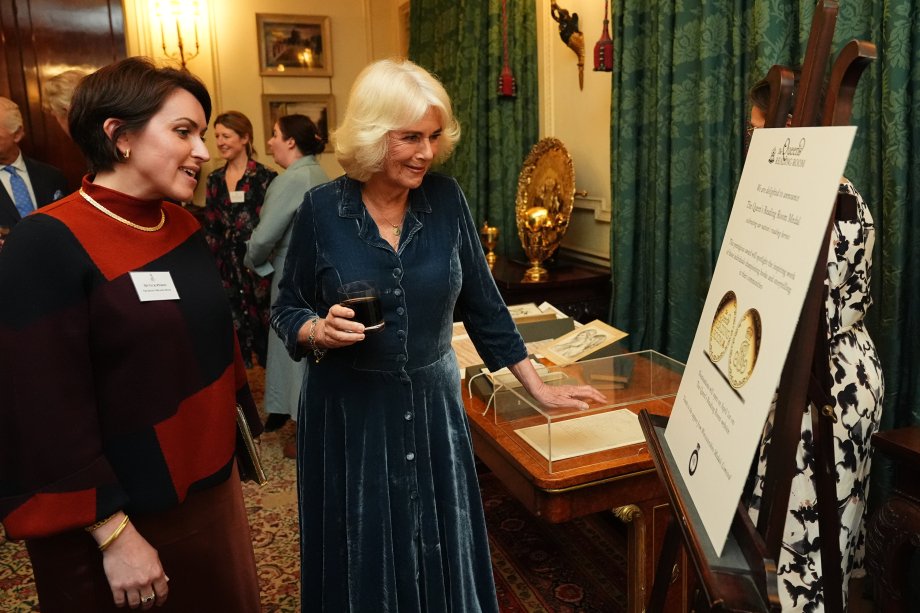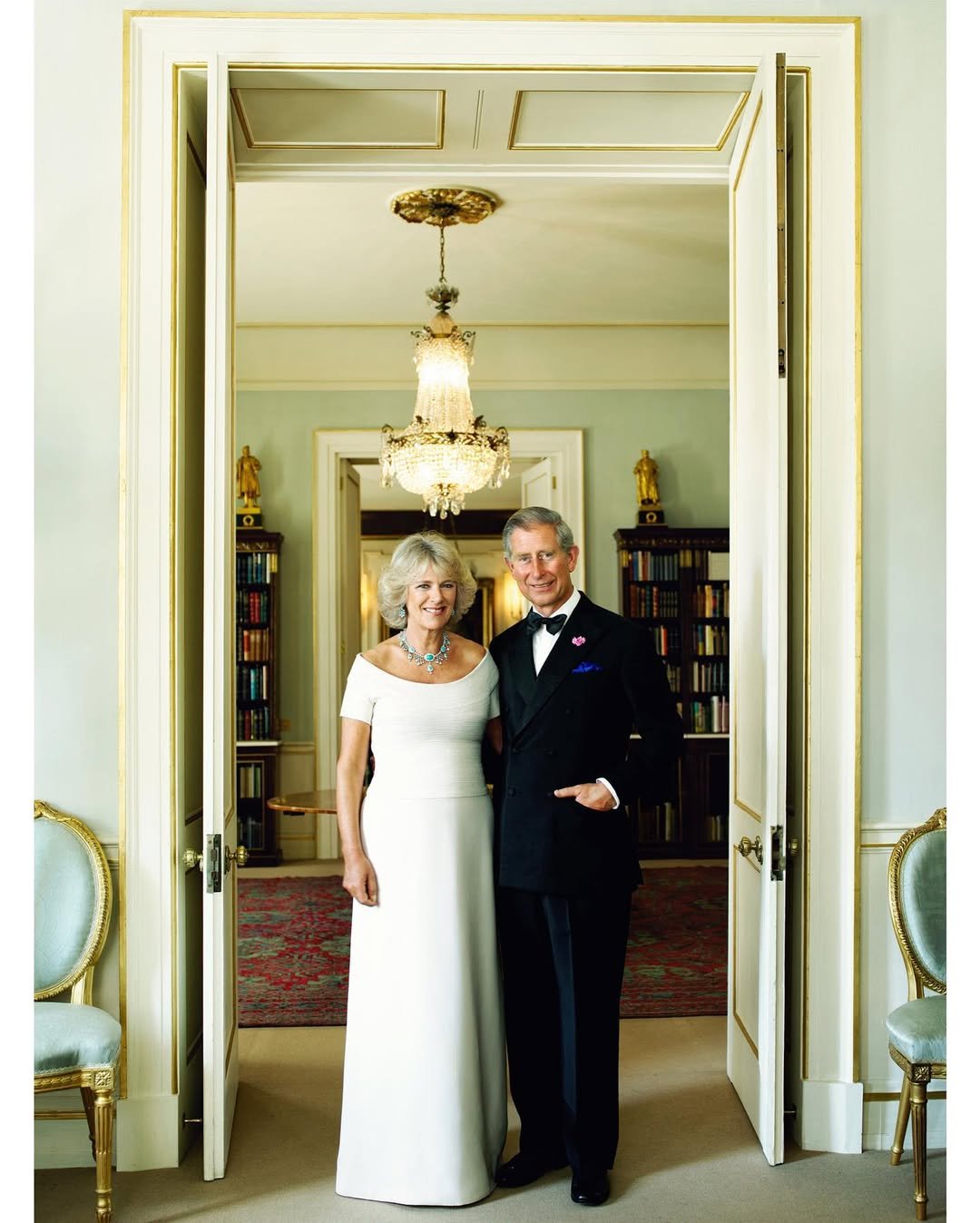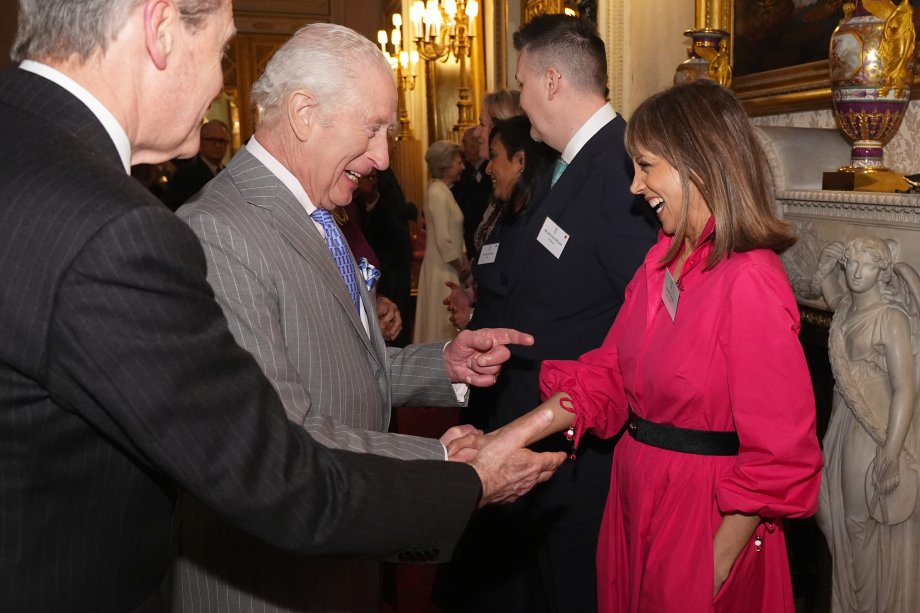Britain is, of course, a country steeped in history and tradition, so it is not unusual to see men and women turned out in splendid uniforms on royal and State occasions – but do you know who these people are and what or who they represent? Here is a brief guide to some of these ancient and impressive offices, many of which were created centuries ago.
Many ancient offices of state exist today; some of them are now largely ceremonial, kept going to maintain proud traditions and nothing more, others still retain some practical function that sits alongside the ceremonial.
The Queen’s Bargemaster and Watermen
Until the 19th century, the easiest way for Monarchs to travel between their various palaces around the capital was by barge on the river Thames. Most royal residences were situated close to the river; from Greenwich Palace to Hampton Court, with the Tower of London and Whitehall in between, the Thames was effectively London’s motorway, in days when roads were poorly maintained and often hazardous to traverse.
The men who rowed the Sovereign along the Thames in the Royal Barge were known as the Royal Watermen. During the reign of Edward VII (1901-1910) their number was halved from 48 to 24, and today The Queen still maintains 24 Royal Watermen who are commanded by The Queen’s Bargemaster.
The Royal Watermen are recruited from Thames Watermen, who operate tugs and launches on the river, and are therefore skilled boatsmen. For their royal duties they are paid the handsome sum of £3.50 a year! Of course, most do it today for the prestige of serving The Queen directly.
There are no State Barges still afloat today. However, the Royal Nore, which is owned and maintained by the Port of London Authority, is the official motor launch used on the rare occasion that a member of the Royal Family travels on the river Thames for an official engagement.
The duties of the Royal Watermen and the Royal Bargemaster are not confined to the water, however. They act as footmen on royal carriages during State Visits, royal weddings and jubilees. At the coronation, the Royal Watermen walk in the procession behind The Queen’s Bargemaster. At the State Opening of Parliament, The Queen’s Bargemaster and four Royal Watermen travel as boxmen on coaches, guarding the regalia when it is conveyed from Buckingham Palace to Westminster and back.
The Queen’s Swan Marker
Thanks to a law passed by Edward III, the Sovereign holds ownership of all unmarked mute swans on a certain stretch of the Thames. Rights over swans can, however, be granted to a subject by the Crown. The ownership of swans in a given body of water was commonly granted to landowners up to the 16th century. The only bodies still to exercise such rights are two livery companies of the City of London. The ownership of swans in the Thames is therefore now shared equally among the Crown, the Vintners’ Company and the Dyers’ Company.
In medieval times, severe punishments were given out to anyone who did the ‘royal bird’ harm – stealing a swan’s eggs earned a year and a day in prison! Nowadays stealing a swan is still larceny, and the Malicious Damage Act makes it an offence either to kill or maim one.
Swan upping is the tradition by which the swans on the Thames are apportioned among the three proprietors. Its main practical purposes today are to conduct a census of swans and check their health. Organised by The Queen’s Swan Marker, the operation takes place over five days during the third week of July, on the Thames between Sunbury and Abingdon.
As they pass Windsor Castle, The Queen’s Swan Marker gives the toast, “Her Majesty the Queen, Seigneur of the Swans” – seigneur from the old French for someone who had been granted a fief, or was a lord.
The respective swan uppers representing The Queen, the Vintners’ and the Dyers’ row up the river in skiffs. Swans caught by The Queen’s swan uppers under the direction of the Swan Marker are left unmarked, except for a ring linked to the database of the British Trust for Ornithology (BTO). Those caught by the Dyers and Vintners are identified as theirs by means of a further ring on the other leg.

Swans are caught during the swan upping to create a swan census. (Bll Tyne)
In July 2009, The Queen as “Seigneur of the Swans,” attended the Swan Upping ceremony for the first time in her reign. This was the first time that the Monarch had personally watched the ceremony in centuries.
Apart from Swan Upping, The Queen’s Swan Marker has other duties. He advises organisations throughout the country about swan welfare and incidents involving swans, he monitors the health of the local swan population and advises fishing and boating organisations how to work with wildlife. The Queen’s Swan Marker works closely with swan rescue organisations and supervises the rescue of sick and injured swans. He also co-ordinates the removal of swans from stretches of the River Thames used for summer rowing regattas.
The Royal Company of Archers
The Royal Company of Archers is a ceremonial unit that serves as the Sovereign’s Bodyguard in Scotland; the regiment has performed this role since 1822 under George IV, when the company provided a personal bodyguard to the King on his visit to Scotland; incidentally this was the first visit of a British Monarch north of the border since Charles II in the late 17th century.

the royal company of archers was originally a bodyguard for george iv in scotland; today they help out at scottish garden parties (dorkymum)
Originally formed in 1676 as an archery club, the Company still functions as a club today and its members compete for thirteen prizes each year. Members are elected and must be Scots or have strong Scottish connections.
Currently known as The Queen’s Bodyguard For Scotland, based in Edinburgh, it performs duties at the request of The Queen at any State and ceremonial occasion taking place in Scotland. The group’s most regular duty is attending the annual garden party at the Palace of Holyroodhouse, the Monarch’s official Scottish residence in Edinburgh. About 120 members of the Royal Company form avenues down which The Queen and The Duke of Edinburgh proceed while guests chosen at random are presented to them by the Company’s Captain-General and President of the Council.
Another major duty is attendance outside St Giles’ Cathedral, Edinburgh, at the service of installation of Knights of the Thistle; the order is the Scottish equivalent of the Order of the Garter, but was created in 1687 by James II. Members of the Company also attend Investitures at the Palace of Holyroodhouse and the presentation of new Colours for Scottish regiments.
Gold Stick
The office of ‘Gold Stick’ dates from the Tudor era, when two officers stayed close to the Sovereign to protect them from danger; they were entrusted with their personal safety, but today the officer is only seen at ceremonial events, since the Met Police are responsible for royal security.
The name comes from the staff of office, which has a gold head.
Embed from Getty Images Embed from Getty Images
In modern times, the office is held jointly by the Colonels of the two Household Cavalry Regiments – the Life Guards and the Blues and Royals. One Gold stick must be on duty at any time and is known as ‘Gold-Stick-in-Waiting’. The current Colonel of the Blues and Royals is Princess Anne, while Colonel of the Life Guards – and therefore the other office holder – is Field-Marshal the Lord Guthrie of Craigiebank, former Chief of the Defence Staff.
Since Queen Victoria’s reign, these duties have been mainly ceremonial; Gold Stick attends all state occasions and take part in the processions for the Coronation, as well as the State Opening of Parliament. Here, Gold Stick is how the Sovereign’s orders are given to the Household Cavalry.
Garter Principal King of Arms
The Garter Principal King of Arms is the senior Officer of Arms of the College of Arms, with the authority over heraldry in England, Wales and Northern Ireland. The position has existed since 1415 and has the added responsibility of ‘running’ the Order of the Garter – regarded as the most prestigious British order of chivalry. To take this position, a man must be English and a gentleman bearing arms.
The College of Arms, or College of Heralds, is a royal corporation of professional heralds, appointed by The Queen. They are distinctive in their royal coat of arms regalia. Heralds act on behalf of the Crown in all matters of heraldry, such as granting of new coats of arms, genealogical research and the recording of pedigrees. For example, when an individual is ennobled (given a title), they then have the right to bear a coat of arms; it is the heralds at the College who will conduct research into the family history and create a coat of arms that represents the individual’s life and family history through symbols.

The Accession Council proclaim the new Monarch from the balcony at St James’s Palace. (Bigstock)
When the British Monarch dies, it is the Garter’s job to proclaim the new Monarch. Initially, the Accession Council meets to declare the new Sovereign from the deceased’s line. Once the new King or Queen makes a sacred oath to the council, the Garter King of Arms steps into the Proclamation Gallery, which overlooks Friary Court at St James’s Palace, to announce the new Monarch.
Honourable Corps of Gentlemen at Arms
‘Her Majesty’s Body Guard of the Honourable Corps of Gentlemen at Arms’ is a bodyguard to the British Monarch. Henry VIII created its predecessor, the Troop of Gentlemen, in 1509 to be his mounted and armed escort. They could be used in battle as well as simply travelling; The Body Guard accompanied Henry to France in 1513 and took part in the Battle of Guinegate and were also present at the Field of Cloth of Gold in 1520.
Henry VII, who took the crown on the battlefield in 1485, had a bodyguard of archers, but his son decided it was a good idea to keep 50 men nearby at all times; these men were taken from the noblest families in England. In 1526, they became a dismounted bodyguard armed with battle-axes. They last saw service in battle during the English Civil War. They were always intended, primarily, as a ceremonial unit, but were on regular duty until the 19th century.
Charles I confirmed that the men had ‘the honour to be our nearest guard and to have their daily access into our [the royal] presence chamber’, a privilege still held.
Today, the duties are purely ceremonial: the Gentlemen accompany and attend the Sovereign at various events and occasions, including state visits, the State Opening of Parliament, garden parties, the Order of the Garter service, receptions of the diplomatic corps, royal weddings, coronations and lyings in state.
Embed from Getty ImagesEmbed from Getty Images
All Gentlemen if the group must be under the age of 55 years on joining, and must retire at 70 years. The Gentlemen retain their prior military ranks, most of which are between major and colonel.
The uniform they wear is that of a Dragoon Guards officer of the 1840s. It has a skirted red coatee (fitted short jacket with tails), blue velvet cuffs, plus facings embroidered with the Tudor (Beaufort) badge of the portcullis – all you’d expect from a Victorian uniform. The helmets, which feature white swan feather plumes are worn even in church.
In addition, officers wear gold aiguillettes, and carry sticks of office, coloured to correspond with their rank: gold for the Captain, silver for the Lieutenant. Cavalry swords are also worn, and long ceremonial battle-axes are carried.






1 comment
BEAUTIFUL